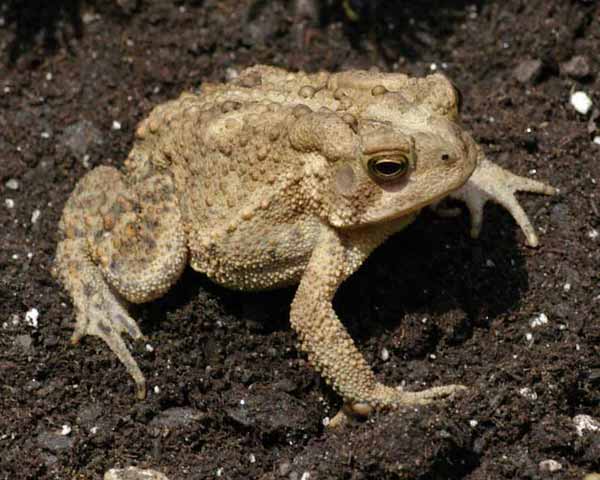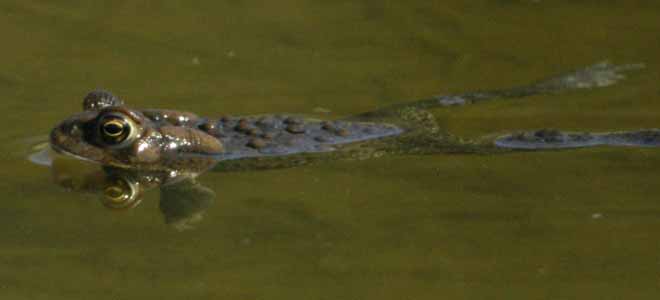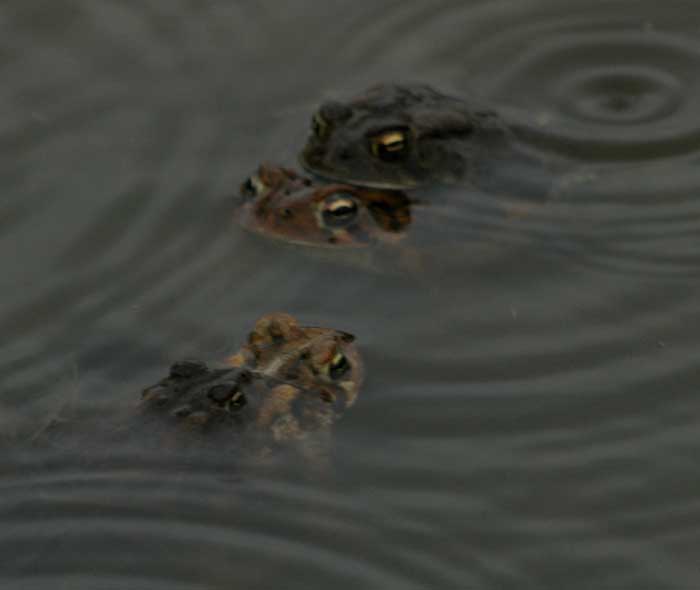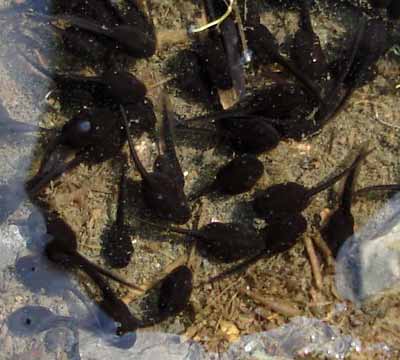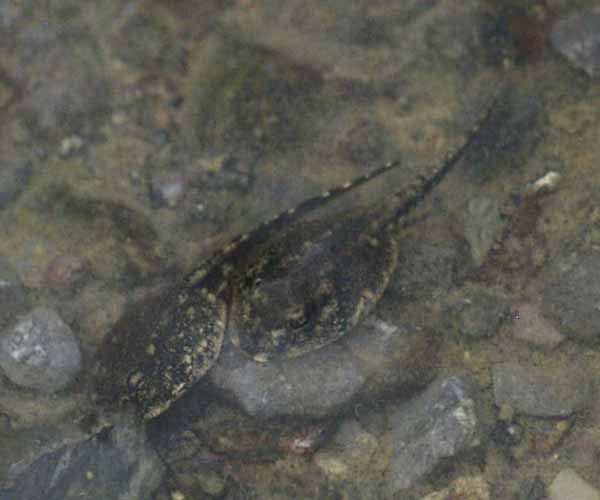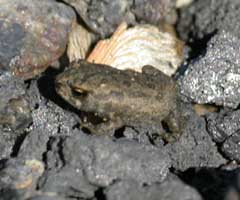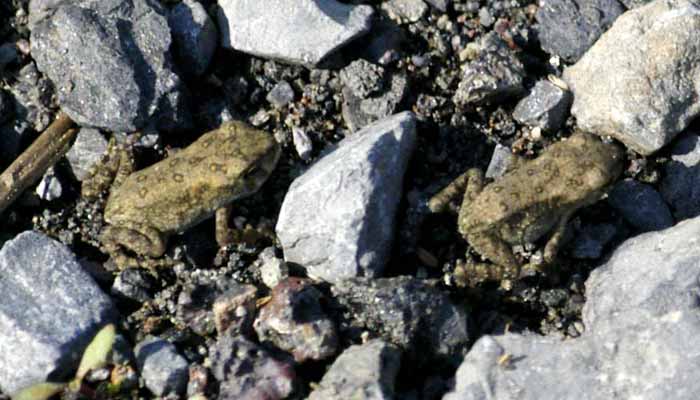|
Less than a week later, the results of the toads' activity were visible in the small pond, which was swarming with countless tadpoles (by the end of April).
|
|
| |
By June 1, the tadpoles have transformed from uniform color to definite features and patterns.
|
|
| |
By June 9, the tadpoles have metamorphosed into miniature toads, or toadlets.
Thousands of the American toadlets were hopping across the countryside and looking for a home. Although I've read that newly metamorphosed toads are a half an inch long, these fellows were barely a quarter of an inch long (and could sit comfortably on a dime).
The photo below is about 4 times life size.
On the other hand, if one takes legs into account, the toadlet would equal a half inch.
|
|
| |
And here is a closeup of two of the many American toadlets of 2008.
|

